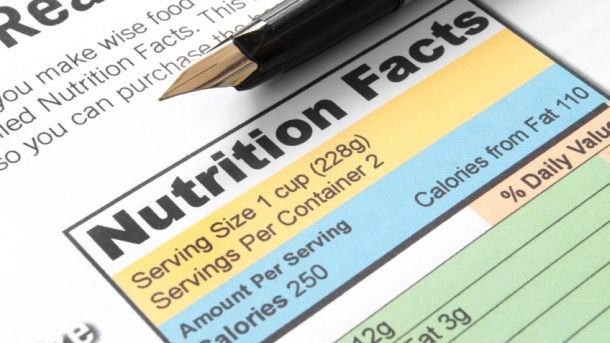GUEST ARTICLE: Why the FDA should take Health Canada’s lead and ditch its added sugars labeling proposal

Two billion dollars... that is what FDA estimates the food industry will spend to comply with proposed changes to the iconic Nutrition Facts label.
Part of that cost includes keeping records showing how much sugars companies add to processed foods and then disclosing that amount, per serving, on the food label.
Will it be worth it? At least one other government that has been considering a similar disclosure requirement has said, 'NO!' On June 12, 2015, Health Canada announced that it was dropping consideration of requiring the disclosure of added sugars on the Nutrition Facts label required in that country.
FDA would be wise to follow suit.
One of the most controversial aspects of FDA’s proposed changes to the Nutrition Facts label has been to require companies to keep track of, and list the amounts of sugars added to processed foods.
Sugar is sugar...
Professionals ranging from the American Society of Nutrition to former directors of FDA’s food labeling office have said the proposal makes no sense – added sugars are no different from natural sugars and the total amount of sugars is already listed on the Nutrition Facts label as well as in the list of ingredients.
The American Society for Nutrition (ASN) produced an especially strong statement against labeling added sugars. Moreover, the experts told FDA that its proposed disclosure requirement breaking out 'added sugars' could confuse the public.
FDA’s proposed regulation was published in the Federal Register on March 3, 2014.
Who's pro and who's anti?
The American Diabetes Association, the American Heart Association, the CSPI and some big food manufacturers – including confectionery giant Mars – are in favor of FDA proposals to list added sugars on the NF panel. But many food manufacturers - and some nutritionists – are firmly against, saying it will confuse shoppers, and that sugar is sugar, whether it’s inherently in a food, or added to it.
Curiously, the Canadian government’s department of health, Health Canada, commenced a “Consultation” to reform its Nutrition Facts label just a few months later in June 2014.
The Canadian approach
The Canadian Consultation (which is akin to an Advance Notice of Proposed Rulemaking in the US), mimicked the FDA’s proposed regulation and suggested that all food labels disclose added sugars per serving. However, after completing its Consultation process, the government of Canada changed its mind. Health Canada issued a proposed regulation on June 12, 2015 sans the added sugars labeling requirement. The Canadian government explained:
The U.S. is proposing to mandate the declaration of the total amount of sugar on their label, along with the amount of added sugar in a line just below. These amounts would be provided in grams because the U.S. does not have a DV for sugars. While both the U.S. and Canadian proposals on sugar have the same overall objective (to provide consumers with information they need to enable them to lower their sugar intake, if they so choose), somewhat different methods of achieving this goal have been chosen.
The Canadian proposed amendments include two elements aimed at enhancing sugar labeling: establishing a DV for sugar in the NFt and the grouping of sugars-based ingredients in the list of ingredients. The added sugar approach (in the U.S. proposed rule) and the % DV approach (in the Canadian proposed amendments) were both presented to Canadian consumers during consultations in 2014, and the feedback results indicated that Canadians found the % DV approach easier to understand and more useful than the U.S. approach. (Emphasis added).
Health Canada went on to say:
. . . the inability of analytical methods to distinguish between naturally occurring and added sugars would contribute to significant compliance and enforcement challenges. In addition, industry indicated that research done in the U.S. concluded that consumers have a limited understanding of the “added sugar” declaration in the Nutrition Facts label (emphasis added).
The FDA has promised its own research study in the preamble to its proposed rule, See 79 Fed. Reg. at 11905, but so far, the agency has failed to produce one.
Let's see the data
If such a study exists, the public has the right to review the data and comment on the results. According to statements by various FDA officials, the agency wants to release a consumer education program instructing consumers how to use the new label disclosure when it moves to finalize the rule.
FDA acknowledges that, if finalized, a requirement for declaration of added sugars on the Nutrition Facts label
Health Canada:
"The proposal to declare added sugars... was popular among consumers and health stakeholders... However, industry stakeholders questioned its scientific basis given that the body metabolizes naturally occurring and added sugars in the same way. Similarly, the inability of analytical methods to distinguish between naturally occurring and added sugars would contribute to significant compliance and enforcement challenges. In addition, industry indicated that research done in the US concluded that consumers have a limited understanding of the 'added sugar' declaration on the Nutrition Facts table."
“will need to be accompanied by consumer education on the role of added sugars, along with solid fats, and the use of new information on the label in overall dietary planning.” (79 Fed. Reg. at 11905.)
However, an inherently confusing labeling disclosure cannot be fixed by a consumer education program. Further FDA consumer education programs involving the Nutrition Facts panel have been unsuccessful in the past.
Rather than dump more taxpayer dollars into a lost cause, FDA should take a lesson from Canada and abandon the proposed requirement for labeling of added sugars content.
Bruce Silverglade is a Principal at law firm Olsson Frank Weeda Terman Matz PC (OFW Law). His practice includes resolution of competitive disputes involving food labeling and advertising claims, proactive responses to FDA regulatory proposals, management of class action lawsuits, FTC and FDA enforcement actions challenging food advertising and labeling, compliance with FSMA, implementation of FDA nutrition labeling regulations, matters concerning economic adulteration, and federal nutrition policy.
Read more reaction to the FDA’s proposals below:
- Guiding Stars: How can consumers cut down on added sugar if it’s not listed on food labels?
- Mars supports FDA proposal to list added sugars on Nutrition Facts panel; move is ‘refreshing’ says CSPI
- What are the biggest contributors of added sugars to the US diet?
- Should ‘added sugars' be listed on the Nutrition Facts panel?
- Kellogg: Including ‘added sugars’ on Nutrition Facts panel will just confuse shoppers
- Study debunks manufacturer fears labeling added sugar would confuse consumers
- GMA: Nutrition Facts ‘added sugar’ proposal could have bizarre consequences for fruit juice labels
What do you think? Post your comments below!










